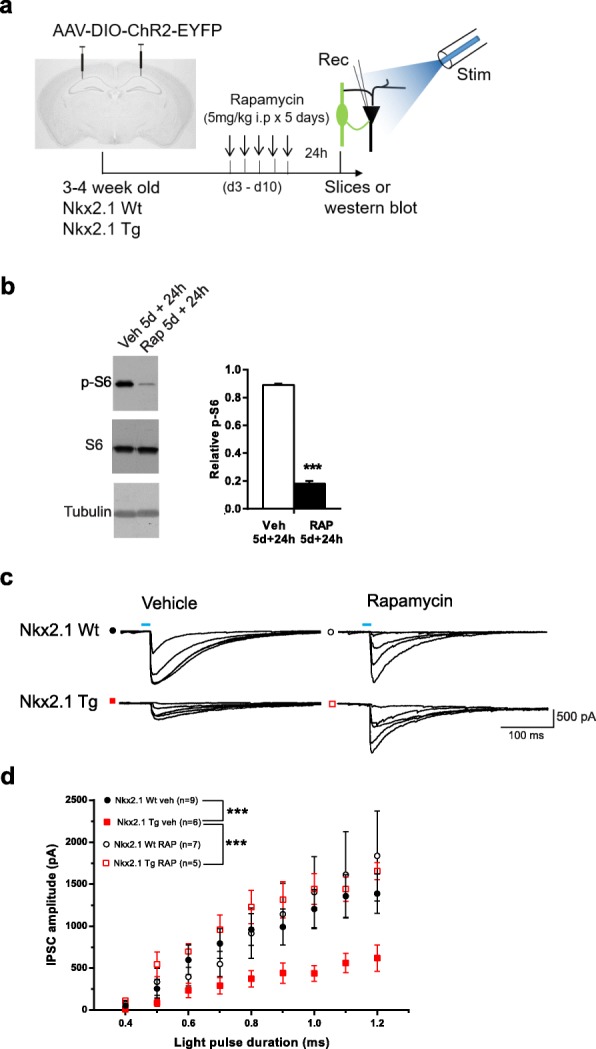Fig. 7.

Chronic rapamycin treatment reversed the deficit in synaptic inhibition. a Diagram of experimental paradigm of chronic i.p. treatment of Nkx2.1Cre/wt;Tsc1f/wt mutant and Nkx2.1Cre/wt control mice with 5 mg/kg rapamycin (or vehicle) and recording of synaptic inhibition of pyramidal cells by Nkx2.1 interneurons. b Representative western blots and summary graph showing reduced phosphorylation of ribosomal protein S6 (p-S6; relative to total S6) in hippocampal lysates obtained 24 h after 5-day treatment of control mice with rapamycin or vehicle (n = 3 separate experiments in each group; unpaired t test, ***p < 0.001). c, d Representative traces (c) and summary graph (d) of input-output function of IPSCs evoked in CA1 pyramidal cells in slices from Nkx2.1Cre/wt;Tsc1f/wt mutant (red) and Nkx2.1Cre/wt control (black) mice that received vehicle (filled symbols) or rapamycin (open symbols). Chronic treatment with rapamycin reversed the reduction of IPSC amplitude in mutant relative to control mice (n = 9 cells in 4 animals for vehicle-treated and 7 cells in 3 animals for rapamycin-treated Wt mice (Nkx2.1Cre/wt;Tsc1wt/wt); n = 6 cells in 2 animals for vehicle-treated and 5 cells in 4 animals in rapamycin-treated Tg mice (Nkx2.1Cre/wt;Tsc1f/wt); 3-way ANOVA, Bonferroni tests, ***p < 0.001)
